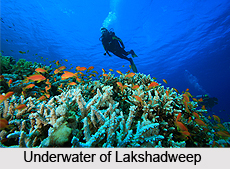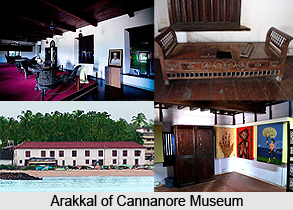 History of Lakshadweep is based on old legends and myths, which was passed on from generation to generation. It is said that the first settlement on these islands was by Cheraman Perumal, who was the last king of Kerala. After his conversion to Islam at the behest of Arab merchants, he slipped out from his capital, Cranganore (Kodungallor). When his absence was discovered, the people went to search him on boats to the shores of Mecca.
History of Lakshadweep is based on old legends and myths, which was passed on from generation to generation. It is said that the first settlement on these islands was by Cheraman Perumal, who was the last king of Kerala. After his conversion to Islam at the behest of Arab merchants, he slipped out from his capital, Cranganore (Kodungallor). When his absence was discovered, the people went to search him on boats to the shores of Mecca.
Early History of Lakshadweep Island
It is believed that one of these ships was wrecked on the island and on their return; they discovered the island of Amini (is now a census town in the Union Territory of Lakshadweep) and started living there. Legends say that small settlements started in the islands of Amini, Kava, ratti, Andrott and Kalpeni. First and later people from these islands moved to the other islands of Agatti, Kiltan, Chetlat and Kadmat.
 Advent of Islam in Lakshadweep
Advent of Islam in Lakshadweep
The advent of Islam dates back to the 7th Century. It is said that that St. Ubaidullah while praying at Mecca fell asleep. He dreamt that Prophet Mohammed wanted him to go the island of Amini to propagate Islam. He propagated Islam but this enraged the headmen of the island and he was ordered to exit at once. The arrival of the Portuguese in India again made Laccadives an important place for seafarers. They plundered the islands. The finely spun coir was required for ships. The plunderers forcibly landed at Amini to procure coir. It is said that the islanders killed them by poisoning and thus came the end of the Portuguese invasion. Even after conversion of people of these islands to Islam, sovereignty remained in the hands of the Hindu Raja of Chirakkal for years. In the middle of 16th Century, the Administration of the island passed on to the Muslim house of Arakkal of Cannanore (Arakkal Palace). The Arakkal rule was oppressive and unbearable.
 Medieval History of Lakshadweep
Medieval History of Lakshadweep
So in 1783, the islanders went to Tipu Sultan, King of Mysore at Mangalore and requested him to take over the Administration of Amini group of islands. Tipu Sultan at that time was on friendly terms with Beebi of Arakkel and after negotiations; the islands of Amini group were handed over to him. In 1854 all the remaining islands were handed over to the British East India Company for Administration, so, came the British rule. The seizure of the islands by the British is an example of the political manipulations of the British to establish their supremacy in India. They were interested only in their political advancements than in ideally governing the people.
Modern History of Lakshadweep
The British brought the Lakshadweep Regulation 1912, which confers limited power of judicial and magisterial status to Amins/ Karanis of the islands. Nine Primary Schools and few dispensaries were started during the colonial rule in the islands. The Union Territory was formed in 1956 and it was named Lakshadweep Island in the year 1973.






